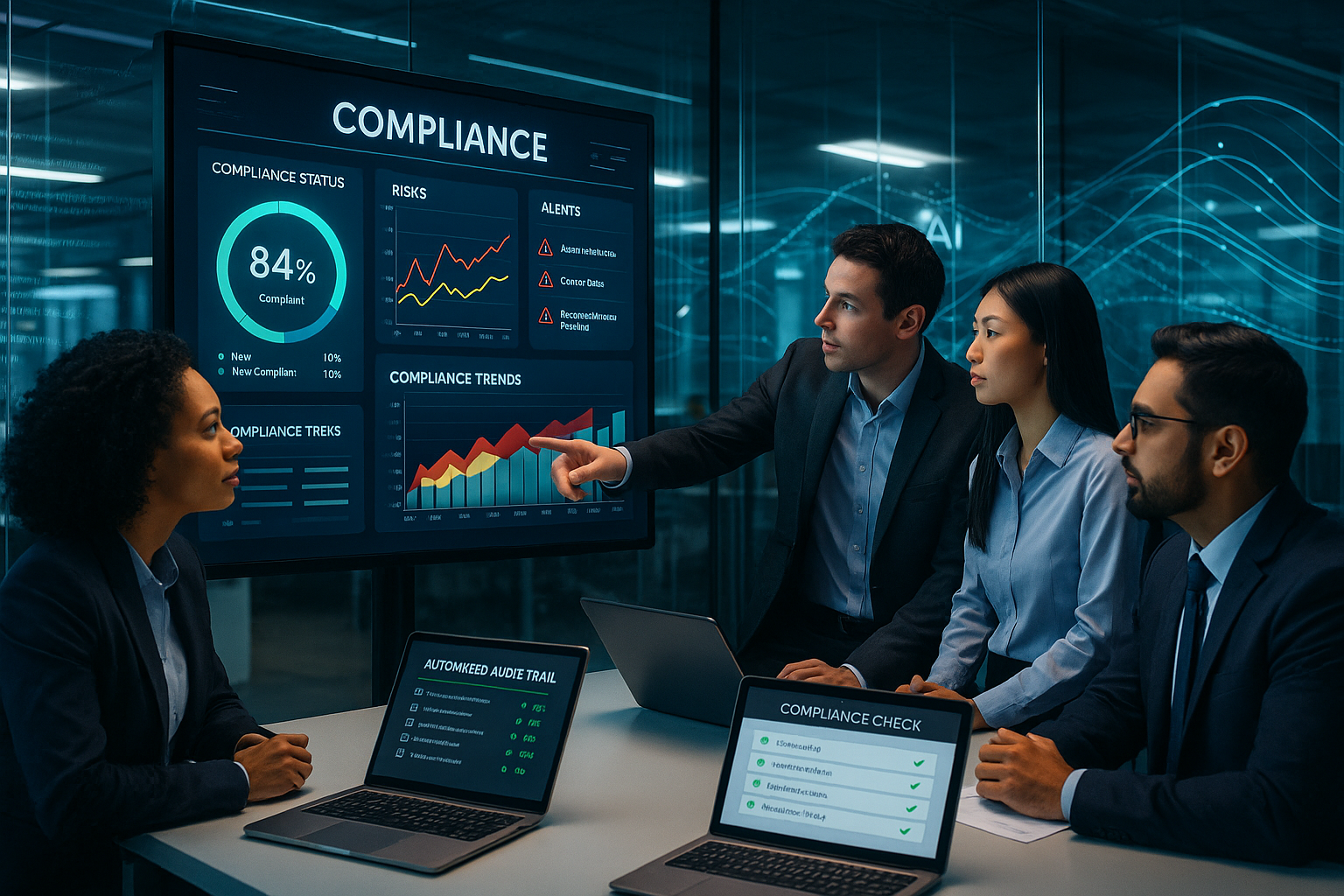What Is Continuous Compliance—and Why It’s Becoming a Boardroom Priority
For decades, compliance was treated as a painful, periodic exercise—a checklist completed under immense pressure just before an external audit. This traditional approach meant organizations operated with dangerous security gaps for 364 days of the year, scrambling to gather evidence for the one day that mattered. The result was audit fatigue, operational chaos, and unacceptable levels of risk.
Today, this reactive model is fundamentally broken. Regulatory scrutiny is intensifying, cyber threats are persistent, and compliance is no longer a necessary evil but a strategic differentiator. Forward-thinking leaders are embracing Continuous Compliance, recognizing it as the backbone of business resilience.
Our mission at Quantarra is to help businesses transition from snapshot audits to an always-on state of assurance.
The End of Audit Fatigue
Continuous compliance is the practice of embedding compliance requirements, controls, and monitoring into daily business operations. Instead of batch-processing compliance annually, it uses technology to verify control effectiveness in real-time. This ensures that an organization is always audit-ready, minimizing the resource drain historically associated with compliance season.
This shift moves compliance ownership out of siloed departments and integrates it directly into engineering, IT, and product workflows. It transforms compliance data from static documents into dynamic, actionable intelligence that reflects the organization's current security posture minute by minute.
The transition to a continuous model provides clear, quantifiable advantages over traditional, manual methods. It fundamentally redefines the relationship between compliance and operational efficiency.
- It reduces audit preparation time by up to 80%, freeing up key personnel for strategic work.
- It ensures real-time detection of control failures, allowing teams to remediate risks before they can be exploited.
- It lowers the total cost of compliance by eliminating redundant manual tasks and reducing the likelihood of costly non-compliance fines.
The Mandate from the Boardroom
The increasing complexity of regulations—from GDPR and HIPAA to regional mandates like the NIS 2 Directive—means that compliance failure is no longer just an IT problem. It is a material, strategic risk that directly impacts valuation, market access, and brand reputation. This elevates continuous compliance straight to the boardroom agenda.
Boards are moving away from merely seeking assurance that an audit passed. They now demand visibility into the organization’s holistic risk posture, linking compliance data directly to business outcomes and financial predictability. This necessity is driving investment in sophisticated tools to manage this complexity.
The need for real-time risk intelligence means senior executives require integrated platforms that provide a unified view of all regulatory exposure. This is why investing in governance risk and compliance software is now paramount.
- Financial Impact: Failure to comply results in massive fines; a continuous posture provides financial predictability by preventing costly emergency remediations.
- Reputational Risk: Demonstrating continuous adherence to frameworks like ISO 27001 builds trust and acts as a competitive advantage when securing new enterprise clients.
- Personal Accountability: In many jurisdictions, directors now face personal liability for cybersecurity and compliance lapses, making robust, continuous oversight non-negotiable.
- Strategic Alignment: Compliance activities must now align with the organization's overarching GRC strategy, proving resilience to investors and regulators.
Automation: The Only Way to Scale Compliance
Achieving continuous compliance at scale is impossible without technology. Manual processes are simply too slow, too error-prone, and incapable of keeping pace with the dynamic nature of modern cloud environments. The infrastructure of today demands an automated compliance platform to manage the sheer volume of controls and evidence required.
The latest AI compliance automation tools are revolutionizing this space by going beyond simple checklist management. They leverage machine learning to intelligently map controls across diverse frameworks, analyze security configurations, and automatically gather evidence. This significantly reduces the burden on compliance staff.
The transition requires a deliberate focus on integrating compliance into the operational fabric through technology. This ensures consistency and reliability across the enterprise.
- Evidence Automation: Integrates directly with infrastructure and HR systems to collect, time-stamp, and organize evidence without human intervention.
- Control Cross-Mapping: Automatically translates controls across multiple frameworks, such as mapping a single control for data encryption across SOC 2 compliance software requirements and ISO 27001 clauses.
- Real-Time Monitoring: Provides live dashboards for continuous compliance monitoring, alerting teams to drift or failure the instant it occurs.
Leveraging an automated approach allows businesses to shift their focus from gathering evidence to addressing risk. This is critical for scaling businesses that must navigate multiple international standards simultaneously without duplicating effort across teams.
Building a Culture of Perpetual Readiness
Implementing continuous compliance is not a technology migration; it is a cultural transformation. It requires leaders to champion a risk-aware mindset where every employee views compliance as part of their job, not an external mandate imposed by auditors.
Choosing the right partner and the right platform is essential. The solution must be capable of providing clear, contextualized data that resonates with both technical teams and the board. It should unify GRC efforts, linking policies, risks, and controls in a single, auditable system.
For organizations embarking on this strategic journey, the goal is clarity, speed, and integrity. Continuous compliance turns a historical blocker of growth into an accelerator.
- Establish clear, measurable metrics (Key Risk Indicators) for continuous monitoring.
- Secure executive sponsorship to ensure accountability across all business units.
- Integrate compliance reviews into the standard CI/CD pipeline to prevent non-compliant deployments.
Continuous compliance monitoring is the competitive edge of the future. It’s the evolution of compliance from a cost center to a core business competency that drives trust, efficiency, and sustainable growth.


